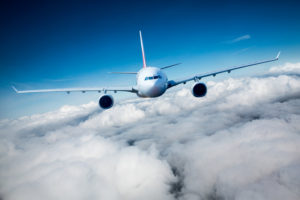Can an airplane be put into reverse? How do planes make a turn? Here is the inside scoop on steering a plane.
Source: Travel 3Sixty
Once the engines are on, an airplane can actually be put into reverse. This happens on the old Boeing 727s. Whilst a car can use its reverse gear, a plane uses reverse thrust. However, this is not permitted with the Airbus A320 or the A330, where the reverse thrust is used to slow the plane during landing, and not for a reverse manoeuvre (called a power back) while on the ground. Boeing 727s can still perform the power back, although this is now on a limited scale, as many airports today prohibit it.
The power back is no longer commonly used as it can send a lot of debris blasting through the air, posing a safety hazard for ground personnel and terminal buildings. A power back also produces high levels of noise and uses a large amount of fuel. So, it is safer, easier and more economical to simply utilise a push back truck instead.
Tarmac Manoeuvres
When it comes to manoeuvring an aircraft on the ground, the pilot first lines up the aircraft at the centre of the runway by using the nose wheel tiller, which is not unlike a car’s steering wheel.
When the nose tiller is turned,it moves the plane’s nose wheel on the ground. This function is controlled by hydraulics. However, if the aircraft is moving at higher speeds, the pilot maintains directional control by using the rudder pedals – the workings of which are similar to that of a boat’s rudder. As the steering movement of the nose wheel, which is linked to the rudder pedals, does not exactly match the rudder at all speeds, the rudder is ineffective for sharp turns and low speeds, and the nose tiller is employed.
Joystick in the Skies
Once the plane is airborne, the rudder pedals are hardly used except in the rare occasion that a pilot faces engine problems. In less than ideal mid-flight conditions, the rudder helps maintain balance and allows the plane to be flown straight ahead. If the rudder pedals are used during a normal flight, it would make the aircraft sway from side to side, causing discomfort to the passengers.
So, to ensure a smooth flight, pilots use the sidestick. On the A320 and A330, the sidestick is similar to the joystick used for video gaming. By removing the conventional flight control wheels and introducing the sidestick, Airbus solved the problem of congestion in the cockpit. It made room for a stowable table for pilots, which makes eating and doing paperwork while flying much easier. It was something I treasured in the Airbus after flying Boeing 777s.
The sidestick in the Airbus works very much like a gaming joystick. When you pull the sidestick towards you, the aircraft climbs; pushing it forward makes the plane descend; while moving it left or right will take the plane in the direction you want.
 Source: Travel 3Sixty
Source: Travel 3Sixty
Taking Turns
When the sidestick is moved, the force is electronically transmitted to an elevator. This is how the term ‘fly-by-wire’ came about, and the action can make the airplane go up and down, or as pilots would say: climb or descend.
And instead of using rudder pedals to turn left or right as is done on the ground, pilots use the sidestick to manoeuvre a turn smoothly. When the sidestick is shifted to the left or right, the action moves the control surfaces on the aircraft’s wings called aileron, which turn the plane smoothly in the appropriate direction so that your glass of water remains stable and the contents don’t spill! The turning happens when the aileron on one wing moves up while the one on the other wing moves down. This creates more lift in one wing and less lift in the other, making one wing go up and the other down.
Many flying enthusiasts are always keen to know what happens if the pilot moves the sidestick in one direction and the co-pilot moves it in the other. In the A320 or A330, the aircraft is built to combine the input from both pilots. This means that if both pilots command a left roll (the aviation term for ‘turn’), their input is combined to command the airplane into a sharper turn to the left. If one pilot commands a left roll and the other a right, their two inputs cancel out, and no movement results.
Once the Airbus lands, the rudder is again used to keep the airplane aligned, which is also partly achieved with the use of the brakes at the pilot’s feet. Once the aircraft slows down, the pilot then moves the nose tiller to manoeuvre the plane, vacate the runway and taxi to the parking gate at the terminal.

Passenger airliner flying in the clouds
Flying the Metal Bird
Hardcore gaming enthusiasts – those who have spent hours in front of a flight simulator (and for whom the joystick is practically an extension of their hand!) – might wonder if they are able to control a plane. The answer is ‘Yes’, but in a restrictive manner; of course, they would need to have actual training on a real metal bird to fly it the way professionals do. I hope you find this insight into how pilots manoeuvre a plane interesting and reassuring, as you would now realise that only the best of technology is at work in the aircraft to ensure passengers travel safely and comfortably.
Happy flying!
Posted: 13.11.17
